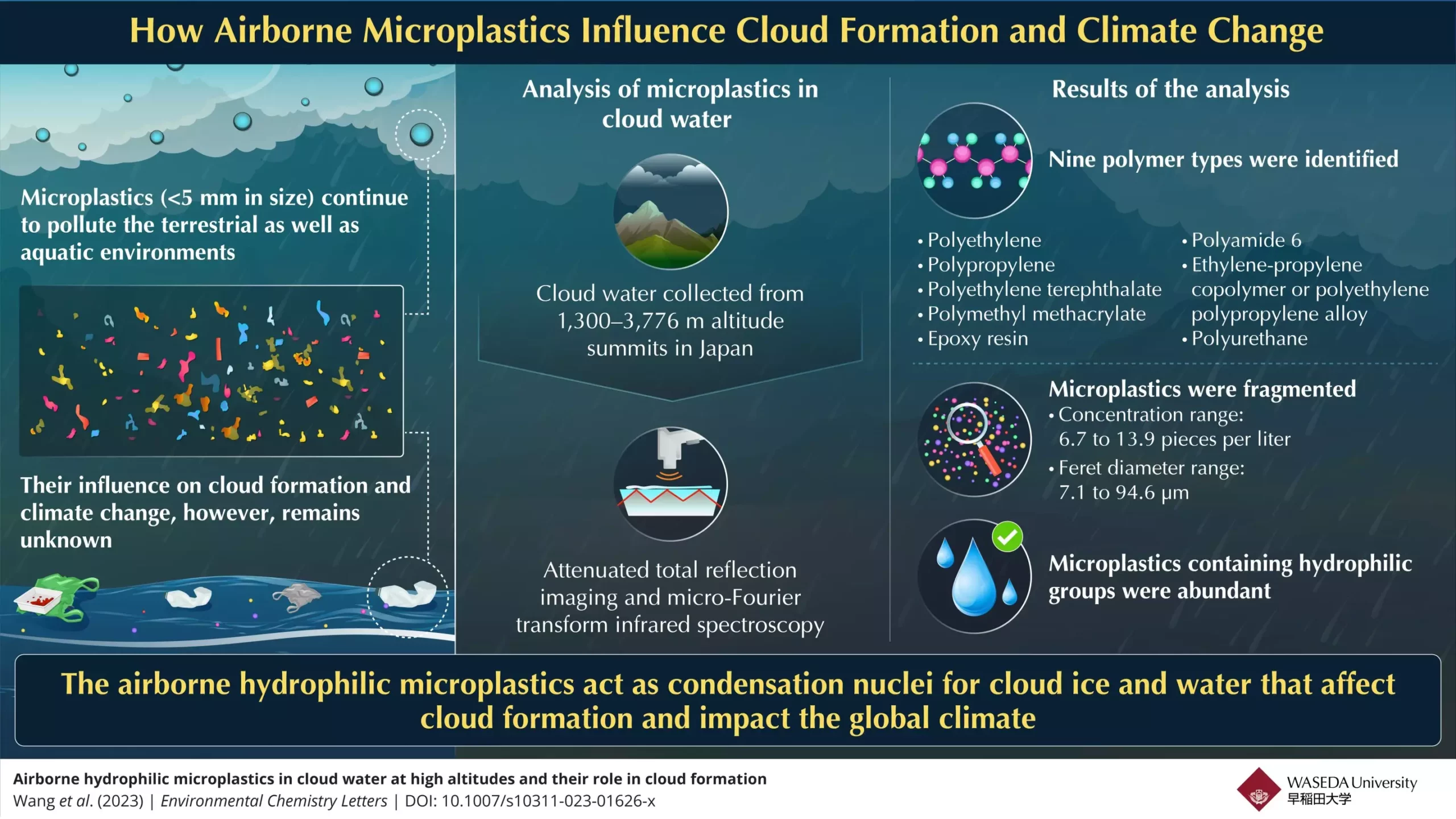Plastic pollution has become a global crisis, with plastic waste finding its way into every corner of our planet. Beyond the visible plastic debris that litters our oceans and landscapes, there is an even more insidious and invisible threat lurking in the air: microplastics. These minuscule plastic particles, less than 5 mm in size, pose significant risks to human health and the planet’s climate. Recent research has revealed the alarming presence of microplastics in various organs of humans and animals, as well as their potential role in cloud formation and climate change.
A group of Japanese researchers from Waseda University has taken on the task of exploring the path of airborne microplastics (AMPs) as they circulate in the biosphere. Led by Professor Hiroshi Okochi, the team aims to shed light on the adverse impacts of AMPs and the urgent need to address the issue of “plastic air pollution.” Their study, published in Environmental Chemistry Letters, highlights the potential consequences of microplastics on human health and the environment if left unaddressed.
To investigate the role of microplastics in cloud formation, the researchers collected cloud water samples from various altitudes, including the summit of Mt. Fuji and Mt. Oyama. Using sophisticated imaging techniques, such as attenuated total reflection imaging and micro-Fourier transform infrared spectroscopy, they identified the presence of microplastics in the cloud water. The analysis revealed the existence of nine different types of polymers and one type of rubber among the detected microplastics. Particularly concerning was the degradation of polypropylene, which exhibited carbonyl (C=O) and/or hydroxyl (OH) groups.
The size of the airborne microplastics ranged from 7.1 µm to 94.6 µm, with the smallest particles observed in the free troposphere. Moreover, the cloud water demonstrated an abundance of hydrophilic polymers, indicating their potential role as cloud condensation nuclei, which facilitate cloud formation. These findings strongly suggest that airborne microplastics play a significant role in rapid cloud formation, potentially impacting the overall climate. The accumulation of microplastics in the atmosphere, particularly in polar regions, poses a grave threat to the delicate ecological balance of our planet and could lead to the loss of biodiversity.
One critical aspect of the researchers’ findings is the accelerated degradation of AMPs in the upper atmosphere due to intense ultraviolet (UV) radiation. The UV radiation breaks down the microplastics at a much faster rate than they would on the ground, releasing greenhouse gases in the process and contributing to global warming. This discovery underscores the urgency of addressing the issue of airborne microplastics to mitigate the adverse effects on our climate and the environment.
As the evidence of microplastics permeating the air continues to mount, urgent action is needed to address this invisible threat. Efforts must be made to reduce plastic waste at its source, develop more sustainable alternatives, and invest in advanced filtration systems to prevent the release of microplastics into the environment. Additionally, further research is necessary to better understand the long-term impacts of microplastics on human health, biodiversity, and climate change. By tackling plastic pollution holistically, we can protect both our planet and ourselves from the hidden dangers of microplastics.
The presence of microplastics in the air poses a dire threat to our planet’s climate and human health. The research conducted by Hiroshi Okochi and his team sheds light on the pervasive nature of airborne microplastics and their potential role in cloud formation. The identification of different types of polymers and the accelerated degradation in the upper atmosphere point to the urgent need for proactive measures to address this issue. As we confront the plastic crisis, we must recognize the invisible yet omnipresent menace of microplastics and take immediate action to safeguard our future.


Leave a Reply